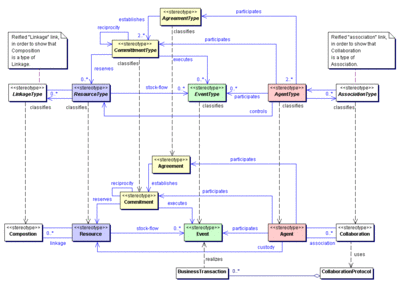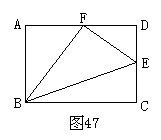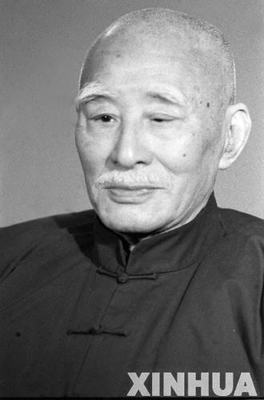同位语从句
一、在复合句中用作同位语的从句叫同位语从句。
它一般跟在某些名词后面,用以说明该名词表示的具体内容。如:
例:The news that they had won the gamesoon spread over the whole
school.
他们比赛获胜的消息很快传遍了整个学校。
析:they had won thegame说明The news的全部内容,因此该句为同位语从句
二、可以跟同位语从句的名词通常有:news,idea,fact,promise,question,
doubt,thought,hope,message,suggestion,words(消息),
possibility等。如:
I’vecome from Mr. Wang with a message that he won’t be ableto
see you this afternoon.
我从王先生那里来,他让我告诉你他今天下午不能来看你了。
三、英语中引导同位语从句的词有连词that,whether,连接副词 how, when, where
等。(注:if, which 不能引导同位语从句。)如:
l have no idea When he will be back.
我不知道他什么时候回来。
He must answer the question whether he agrees to it or not.
他必须回答他是否同意这样一个问题。
四、有时同位语从句可以不紧跟在说明的名词后面,而被别的词隔开。 如:
Several years later,word came that Napoleon himself was comingto
inspect them.
几年以后,有消息传来说拿破仑要亲自视 察他们。
The thought came to him that maybe the enemy had fled thecity.
他突然想起可能敌人已经逃出城了。
五、同位语从句与定语从句的区别。
1 同位语从句与定语从句一样,都是用在名词后面。
所不同的就是:定语从句用来修饰前面的名词或代词的;
同位语从句是前面名词的具体内容。例如
The news that I heard of is true. (定语)
The news that he won't be back is true. (同位语)
请问此2句哪一句能回答下面这个问题: What's the news?
显然是第二个。那就是同位语
2 定语从句的引导词在从句中充当一定的成分,可作主语、宾语、状语等;
而同位语从句中的引导词在从句只起连接作用,不作任何句子成分。
1) A plane is a machine that can fly.
飞机是一种能飞的机器。
2)The fact that they didn't finish the work hasto be faced.
必须面对事实,他们没有完成工作。
例1中的引导词that在从句中充当句子成分,作从句的主语,故为定语从句;例2中的that只起连接作用,引导从句解释fact的内容,不作任何句子成分,故为同位语从句。
3引导定语从句的关联词在从句中作宾语或状语时,可以省略或被其他词代替;
而同位语从句的引导词一般不能省略,更不能被代替。例如:
1) The news that she heard is true. 她听到的消息是真的。
2)The news that she will go abroad is true. 她将出国这消息是真的。
例1是定语从句,that可省略;
例2是同位语从句,that不能省略。
3)The reason why he was chosen remains unknown.
他为什么被选上的原因还是不清楚。
4)The idea why he was chosen attracted ourattention.
他为什么会被选上,这一想法引起我们的注意。
例3中why引导的是定语从句,why可以被 for which或 that 代替;
例4中 why引导的是同位语从句,why 不能省去,也不能被其它词代替。
4 定语从句所修饰、限定的先行词可以是各类名词,可以有复数形式;
而同位语从句一般都与抽象名词同位,一般没有复数形式。例如:
1) The possibilities that she was offered seemed verygreat.
她得到的可能性似乎大些。
2)Her mother was worried about the possibility that herdaughter
dislike to go to school.
她的母亲很担心,她女儿有可能不喜欢上学。
例1中的possibilities是定语从句的先行词,可用复数形式;
例2中的possibility是抽象名词,后接的是同位语从句,一般不用复数形式。
5在名词doubt“怀疑”后的同位语从句用whether连接;
在nodoubt“不怀疑”之后的同位语从句用that连接。例如:
We have some doubtwhether they can complete the task on time.
我们怀疑他们是否能准时完成任务。
There is no doubt thatZhang Wei will keep his promise.
我们相信张卫会守信的。
6语气
在suggestion,advice,request,order等意为“建议;命令;要求”的名词后,同位语从句中的谓语动词通常用“should+动词原形”的虚拟语气结构,句中的should可以省略。例如:
Our teacher gave us someadvice how we(should)use the computer.
老师给我们提出了一些如何使用电脑的建议。
The suggestion came fromthe chairman that the new rule(should)be
adopted.
采纳新规则的建议是主席提出来的。
The government gave theorder that all these houses(should)be pulled
down in three weeks.
政府下令三个星期内所有这些房子都要拆掉。
巩固性练习:
1.The fact ____ she works hard is well known to usall.
A.that B.what C.whyD.which
2.The fact ____ he wassuccessful proves his ability.
A.that B.what C.whichD.why
3.The news ____ he waskidnapped surprised us greatly.
A.what B.that C.whyD.when
4.His suggestion ____the meeting be delayed was turned down.
A.which B.thatC./D.it
5.I have no idea ____ hewill start.
A.when B.that C.whatD./
6.I've come from thegovernment with a message ____ the meeting won't be heldtomorrow.
A.if B.that C.whetherD.which
7.The thought ____ hemight fail in the exam worried him.
A.when B.which C.whatD.that
8.The order ____ theprisoner be set free arrived too late.
A.which B.whether C.thatD.what
9.The nurses are tryingtheir best to reduce the patient's fear ____ he would die of thedisease.
A.that B.as C.of whichD.which
10.He often asked me thequestion ____ the work was worth doing.
A.whether B.where C.thatD.when
Keys: 1-5 AABBA 6-10BDCAA
 爱华网
爱华网


